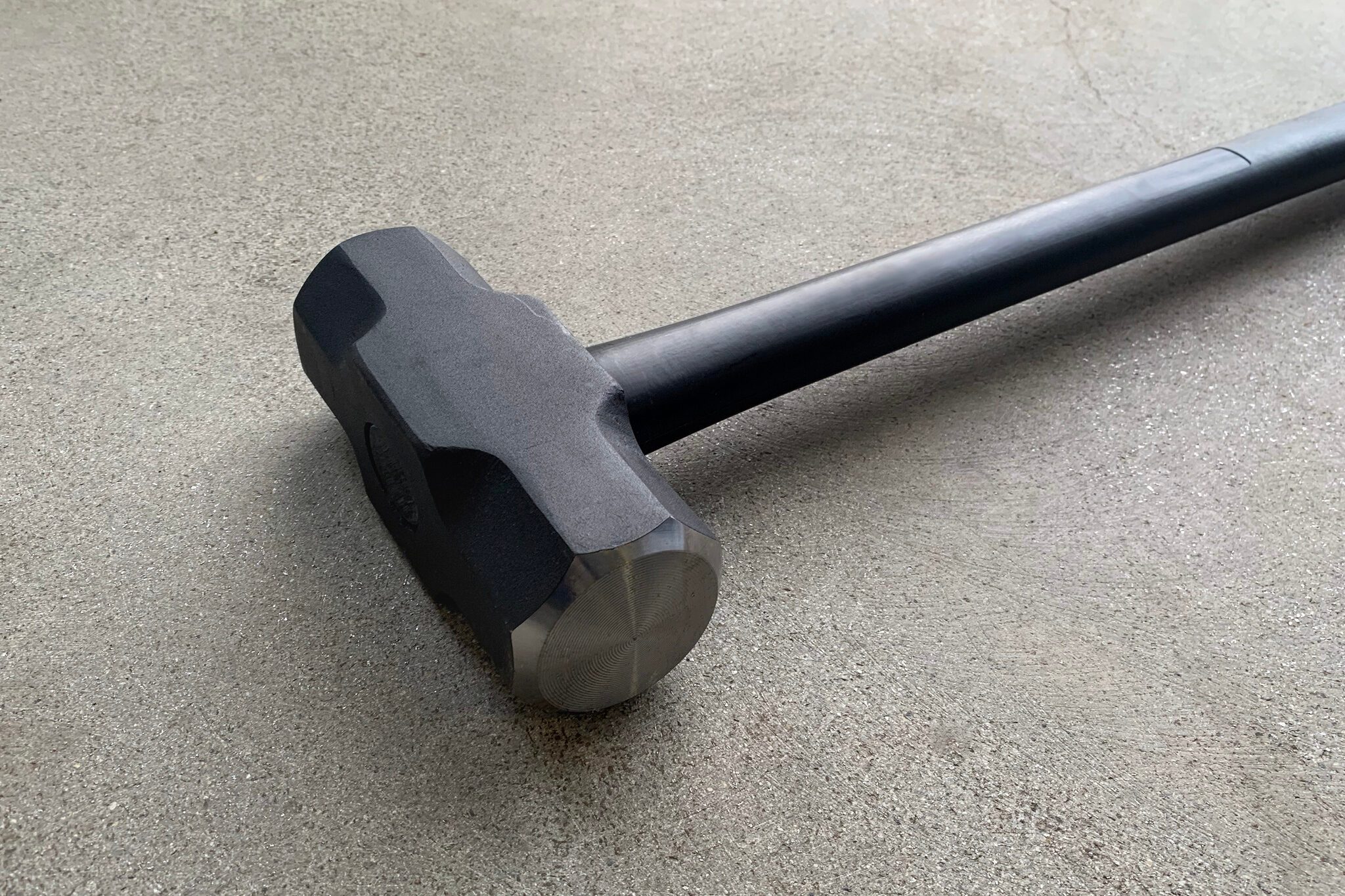A flexible sledgehammer sounds like an oxymoron, but it actually exists, and it can make work less tiring, more efficient and more productive.

A Sledgehammer That’s Flexible? Here’s the Genius Behind It

A flexible sledgehammer? Wouldn’t that be dangerous? Don’t worry…most of them aren’t THAT flexible, although the bendy ones featured in videos like this one do give the impression of being more like maces than hammers. Those aren’t the types of sledgehammers on store shelves in North America, where the handle is still rigid, but not rigid enough to send vibrations up your arms and make you dread the next blow of the hammer.
So, do you need a flexible sledgehammer? That depends on the job you’re doing, but if it involves a lot of swings, you might. It will help you feel less tired, you’ll suffer fewer aches in your arms and hands, and, as a bonus, you’ll be able to develop more pounding force to help you get the job done faster.
What Is a Flexible Sledgehammer?
The floppy or bendy sledgehammers you see in videos are also known as Chinese sledgehammers, and you’ll find them primarily in use in China and other parts of Asia. The handles are made of flexible rubber that allows users to employ a whip-like technique to develop more pounding force with less effort. I’ve never used one, and I’d be reluctant to do so in tight quarters because I suspect they increase the likelihood of errant swings.
On North American store shelves, a flexible sledgehammer is one with a semi-rigid handle made of fiberglass, vulcanized rubber or a combination. It’s also known as a shock-absorbing sledgehammer because of the ability of these materials to dampen vibrations. If you’ve ever used a sledgehammer with a traditional oak or hickory handle, you’ll appreciate the innovation. No more loosening your grip as the hammer head strikes to avoid vibrational shocks.
What Are Flexible Sledgehammers Used For?
You can use a North American-style flexible sledgehammer (as distinct from a Chinese bendy one) for any job that calls for a sledgehammer, including:
- Breaking concrete and brick;
- driving stakes;
- splitting wood with a wedge;
- interior demolition work, including breaking up walls and tearing down framing.
Got an old cast iron bathtub that you want to replace? Breaking it up with a sledgehammer is an efficient way to remove it, and a flexible sledgehammer is perfect for this job. It’s also a great tool for quickly removing an old tile floor by breaking the tiles into pieces.
Key Benefits of Using a Flexible Sledgehammer
The handle of a flexible sledgehammer absorbs shocks, which reduces fatigue when you have to swing it repeatedly. This results in the following side benefits:
- You can work faster and more efficiently;
- You can develop more power;
- You can maintain control for a longer period;
- You’ll get fewer blisters (assuming you don’t wear gloves, which you should);
- You reduce the likelihood of breaking the handle and having the head turn into a dangerous projectile. Neither fiberglass nor rubber break as easily as wood.
These benefits would also apply to Chinese bendy sledgehammers, especially in terms of generating power and working faster. Having never used one, I can’t comment on how easy it would be to maintain control during repeated swings. Videos typically show workers swinging them horizontally — I’d be reluctant to swing one vertically, even when wearing a helmet.
Safety Tips for Using a Flexible Sledgehammer
Whether you’re using a flexible sledgehammer or a traditional one with a wooden handle, New Jersey’s MEL Safety Institute recommends observing these safety precautions:
- Avoid using a sledgehammer when another tool will work.
- Don’t use a hammer heavier than you can control. For most purposes, a six to ten pound hammer will probably get the job done.
- Check the handle and head for cracks before you use the hammer.
- Wear Personal Protective Equipment (PPE), including gloves, goggles and a helmet. If anyone else is around, they should also wear PPE.
- Double-check your surroundings before swinging the hammer. Make sure there are no tripping hazards or anything in the path of your swing.
- Use the minimum swing you need to do the job.
- Avoid swinging the hammer above your head.
Sources
- Municipal Excess Liability Joint Insurance Fund: Sledgehammer Best Practices; (2025)
RELATED:



















